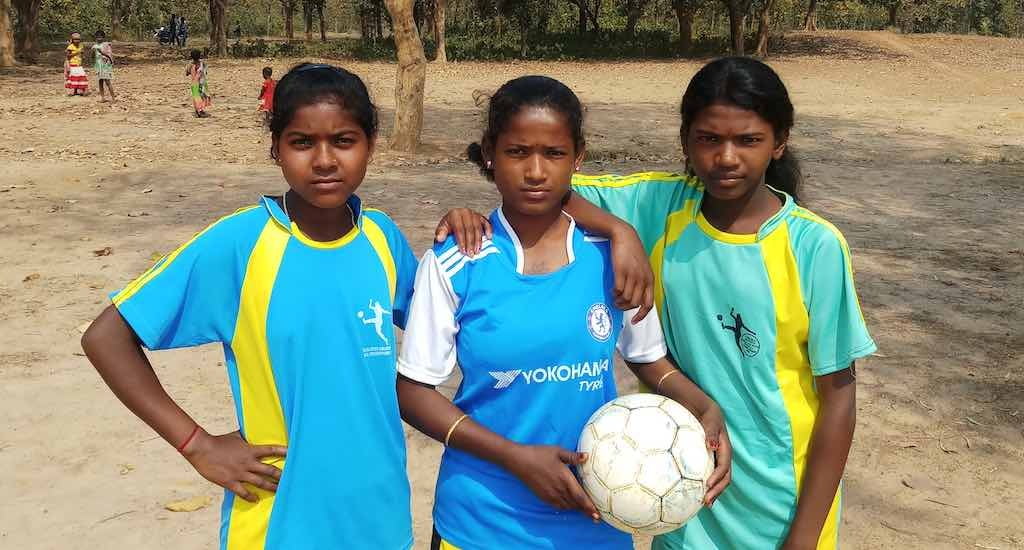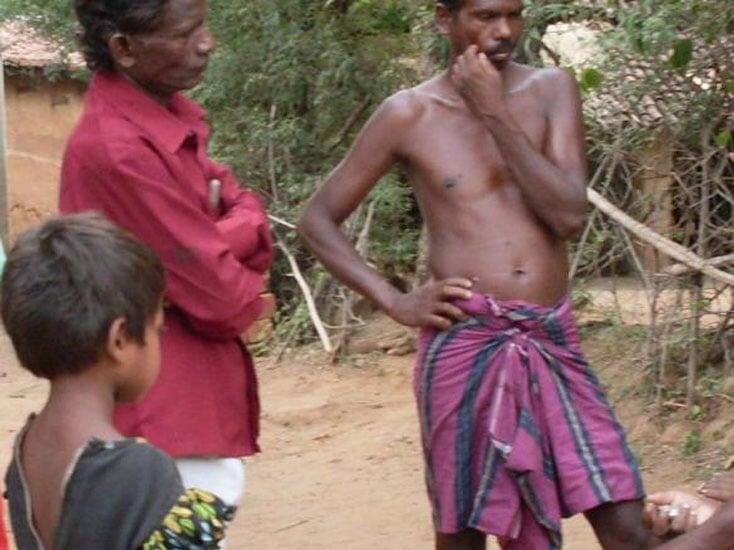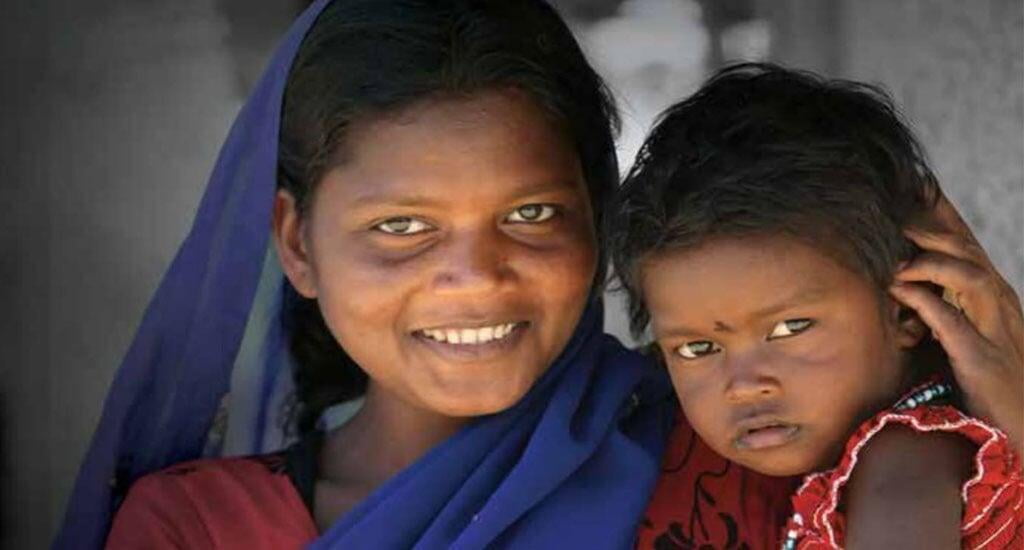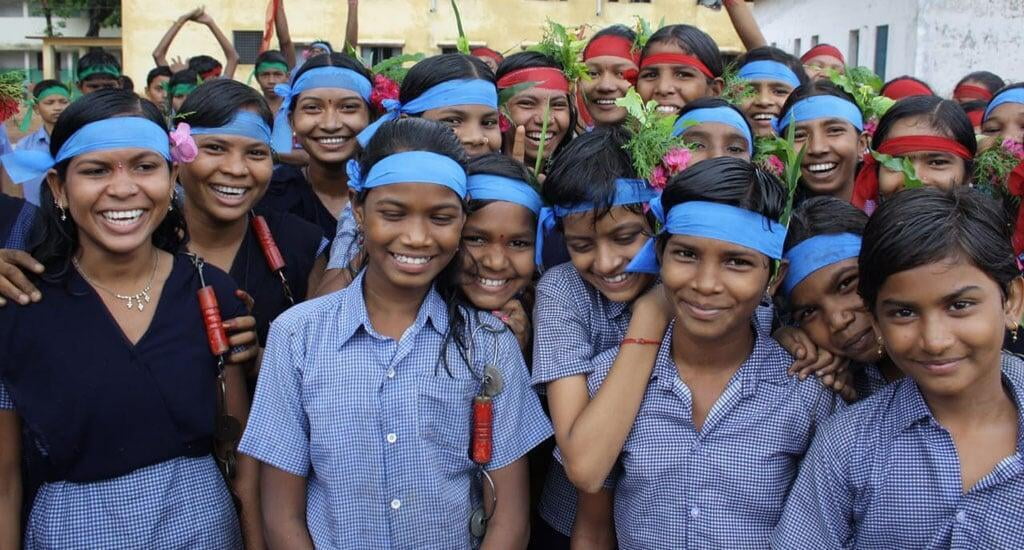Tribes We Serve

Santhal
The Santhal are the largest and one of the oldest tribes in India, They are spread across Assam, Bihar, Chhattisgarh, Jharkhand, Odisha and West Bengal. From time immemorial they have cleared forests, tilled the land and produced food for subsistence. They are also well-versed in the art of hunting and sericulture. The Santhal system of governance, known as Manjhi-Paragana, can be compared to local self-governance. Panchayats are a common feature, with clusters of 50-200 villages forming mega panchayats. Dancing and singing as a group is an integral part of Santhal culture. Santhals worship Marang Buru or Bonga as supreme deity. The weight of belief, however, falls on a court of spirits (Bonga), who are believed to handle different aspects of the world and who must be placated with prayers and offerings in order to ward off evil. A characteristic feature of the Santhal village is a sacred grove on the edge of the settlement, considered the home of spirits.

Mundas
The Munda people are an Austroasiatic speaking ethnic group of India. They predominantly speak the Mundari language as their native language, which belongs to the Munda subgroup of Austroasiatic languages. The Munda are found in the northern areas of east India concentrated in the states of Jharkhand, Bihar, Odisha and West Bengal. They have many folk songs, dances, tales and traditional musical instruments. Both sexes participate in dances at social events and festivals. The naqareh is a principal musical instrument. Some folk dances of munda are Jadur, Karam susun and Mage susun. The supreme deity of Mundas is Singbonga, meaning the Sun god, who according to them, saves them from troubles.
Mundas
The Munda people are an Austroasiatic speaking ethnic group of India. They predominantly speak the Mundari language as their native language, which belongs to the Munda subgroup of Austroasiatic languages. The Munda are found in the northern areas of east India concentrated in the states of Jharkhand, Bihar, Odisha and West Bengal. They have many folk songs, dances, tales and traditional musical instruments. Both sexes participate in dances at social events and festivals. The naqareh is a principal musical instrument. Some folk dances of munda are Jadur, Karam susun and Mage susun. The supreme deity of Mundas is Singbonga, meaning the Sun god, who according to them, saves them from troubles.

Kora
Kora are an Dravidian ethnic group found mainly in many districts of Odisha, Jharkhand and West Bengal. The 2011 census showed their population to be around 246, 598. The Kora are noted for their traditional skills and primary occupation in various earth works such as cutting soil and digging tanks
PVTG (Particularly Vulnerable Tribal Group i.e. BIRHORE and LODHA)
Kora
Kora are an Dravidian ethnic group found mainly in many districts of Odisha, Jharkhand and West Bengal. The 2011 census showed their population to be around 246, 598. The Kora are noted for their traditional skills and primary occupation in various earth works such as cutting soil and digging tanks
PVTG (Particularly Vulnerable Tribal Group i.e. BIRHORE and LODHA)

Birhor
The Birhor are a nomadic hunting-gathering tribe found in Jharkhand and neighbouring areas of Chhattisgarh, West Bengal, Odisha, Bihar and Madhya Pradesh. They have been classified as a particularly vulnerable tribal group. Tribe members practice shifting cultivation. Birhor live in small settlements called tanda at the edge of the forest. Expert hunters, they use nets and snares for catching small animals and birds. Nets made of strong fibre spread from tree to tree are used to trap monkeys. They also collect honey. The practice of barter still exists. The Birhor religion presents a mixture of animism, animatism, naturalism, worship and belief in spirits.
Birhor
The Birhor are a nomadic hunting-gathering tribe found in Jharkhand and neighbouring areas of Chhattisgarh, West Bengal, Odisha, Bihar and Madhya Pradesh. They have been classified as a particularly vulnerable tribal group. Tribe members practice shifting cultivation. Birhor live in small settlements called tanda at the edge of the forest. Expert hunters, they use nets and snares for catching small animals and birds. Nets made of strong fibre spread from tree to tree are used to trap monkeys. They also collect honey. The practice of barter still exists. The Birhor religion presents a mixture of animism, animatism, naturalism, worship and belief in spirits.

Birhor
The Birhor are a nomadic hunting-gathering tribe found in Jharkhand and neighbouring areas of Chhattisgarh, West Bengal, Odisha, Bihar and Madhya Pradesh. They have been classified as a particularly vulnerable tribal group. Tribe members practice shifting cultivation. Birhor live in small settlements called tanda at the edge of the forest. Expert hunters, they use nets and snares for catching small animals and birds. Nets made of strong fibre spread from tree to tree are used to trap monkeys. They also collect honey. The practice of barter still exists. The Birhor religion presents a mixture of animism, animatism, naturalism, worship and belief in spirits.
Birhor
The Birhor are a nomadic hunting-gathering tribe found in Jharkhand and neighbouring areas of Chhattisgarh, West Bengal, Odisha, Bihar and Madhya Pradesh. They have been classified as a particularly vulnerable tribal group. Tribe members practice shifting cultivation. Birhor live in small settlements called tanda at the edge of the forest. Expert hunters, they use nets and snares for catching small animals and birds. Nets made of strong fibre spread from tree to tree are used to trap monkeys. They also collect honey. The practice of barter still exists. The Birhor religion presents a mixture of animism, animatism, naturalism, worship and belief in spirits.
